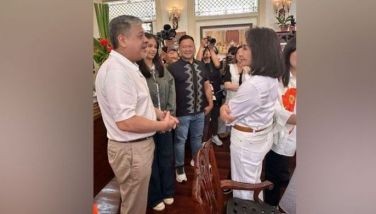Books on my reading list

Over the Christmas holidays, I received several books as gifts. I have only started to read after the hectic holidays. This may seem strange but having a lot of unread books is nothing new for collectors like me. In fact, there is a Japanese word, “tsundoku,” which originated as “a slang term for the habit of buying books and letting them pile up without reading them.”
Here is a short list of books I intend to read, removing them from my tsundoku pile.
Carmelita Ignacio Quebengco: A Life in Words and Pictures edited by David Bayot et al, published by the De La Salle University Publishing House.
The book is the result of an interview by David Bayot with Carmelita “Lita” Quebengco, who has been cited for her exemplary achievements in education and educational management as a former executive vice president and chief operating officer of De La Salle Philippines, and as Chancellor Emeritus of De La Salle University. She was also interim president of DLSU and was the first and, so far, the only lay and female president of a LaSallian university.
According to Br. Bernard Oca FSC, DLSU president, “… The book is the University’s gesture of paying tribute to a pillar in the world of education and an outstanding LaSallian. Throughout her years in La Salle, Quebengco worked with the La Salle Brothers for more than 50 years. She began working with La Salle in June 1969 as a high school teacher at La Salle Greenhills. During her tenure occupying senior administrative positions, she worked with the following Christian Brothers: Br. Andrew, Br. Donato, Br. Dizon, Br. Erguiza, Br. Luistro and Br. Laguda.”
It can be said that she was present at the passing of the La Salle system from one generation of Brothers to the current generation. During her time in the university, she was witness to several developments. Among the most interesting is her story of how the College of St. Benilde started. The story of this institution began with Br. Andrew. However, it has developed to be the leading institution today in the field of arts, hotel and restaurant management and media arts under the present leadership of Br. Dodo Fernandez FSC.
Lita Quebengco was also deeply involved in the startup of the DLSU Campus in Canlubang, Laguna and the DLSU in Dasmariñas, Cavite.
Quebengco succeeded Br. Rolly Dizon FSC as interim president. In her interview, Quebengco said she felt she was better suited to be a COO rather than a CEO. She said: “I knew I would not be happy fulfilling some of the responsibilities of a university president like raising funds… I prefer to be in solitude after a long day’s work rather than attending cocktails and dinner parties for the University as a president should.” She agreed to be president for one year, until a Brother was ready and free to be appointed.
Another project that she was involved in was providing an educational system for the Mangyans, an indigenous tribe in Mindoro.
In the book, there is also a section where Quebengco talked about “Lessons I have Learned as a University Chancellor on Leadership and Management.”
This is an outstanding book on an outstanding educator of an outstanding educational institution.
* * *
Tsinoy: The Story of the Chinese in Philippine Life by Kaisa Para sa Kaunlaran, 2005. This is a 265-page book that actually looks like a coffee table book. I have yet to read this closely but I intend to and write a thorough book review as soon as I have thoroughly read it. The book is divided into six parts, which begins with the pre-Hispanic years. The next chapter is the Spanish Occupation, then the American Occupation, the Japanese Occupation and Post-War Economy and Reconstruction. The last chapter is a segue to the contemporary era.
One of the most interesting parts of the book is the Foreword written by Corazon C. Aquino. She writes about her great grandfather, the first Jose Cojuangco, whose Chinese name was Co Giok Huang who decided to leave their village in Fujian province and try his luck in the Philippines.
Cory writes about her many Tsinoy friends, including her son-in-law, Richard Dee, the son of Ambassador and Mrs. Howard Dee. Cory says that her most important Tsinoy friend was His Eminence, Jaime Cardinal Sin.
* * *
Song of Negros: Myth and Culture in the Philippines by Victoria Hoffarth, Central Book Supply Inc., 2022. This book intrigued me because I consider Negros as my home province, where I grew up. According to the author, very few stories come from Negros because the settlements in Negros were relatively late in coming. Most Visayan folktales originated from the nearby islands of Panay and Cebu.
The book is divided into two parts. Part One contains the illustrated narration of myths, supplemented by comments and sources of materials relevant to each story. Part Two includes essays that ground the narratives to our history and explore their relevance to Philippine modern society in terms of culture and religion.
Aside from these three books, there are several other books on my tsundoku shelf that hopefully I can read during the next few months. Definitely one of them is Nexus by Yuval Noah Harari.
- Latest
- Trending

























